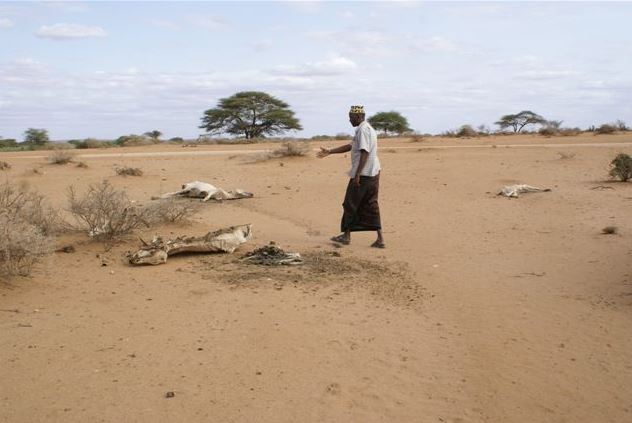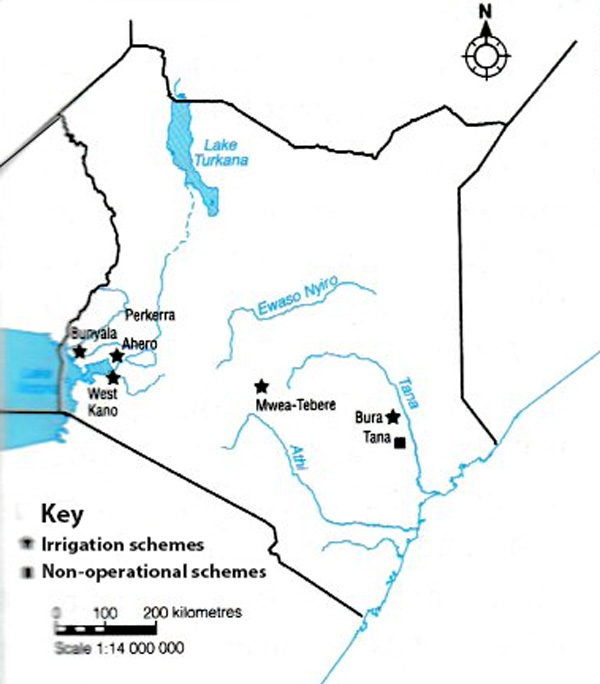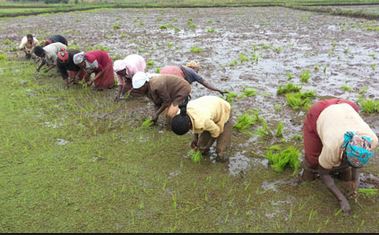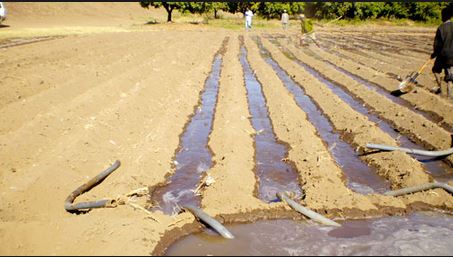- Irrigation is the use of water led from rivers or lakes into farms in order to grow crops on dry land.
- Irrigation is practised in dry areas where soils are suitable for growing crops, but the rainfall is not enough.
Here we see an area of land in Kenya where rainfall is a threat to soil quality.


This is the oldest irrigation scheme in the country. It has been very successful in transforming an arid region - Kirinyaga district into productive land. It is located at the foothills of Mount Kenya in Embu and Mbeere Districts. Here, rainfall is low and unreliable and rainfall does not fall when it is expected and it does not come in the expected amounts. Here we see Mwea Tebere after transformation.

The main irrigation method used is basin irrigation. This involves directing water into shallow basins using canals. Since the land in Mwea Tebere Irrigation Scheme slopes gently away from the main river, water flows into the basins and out by gravity. Here is an example from Ethiopia.

Perkerra Irrigation Scheme is located along River Perkerra, which fl ows into Lake Baringo. It lies on the fl oor of the Rift Valley where rainfall is both inadequate and unreliable. It has about 486 hectares of land under crops. Like other schemes, it was managed by the National Irrigation Board. It ran into problems hence its activities stopped. In 2005, the government revived it, repaired its machines and provided new pumps. The scheme is in operation currently.
The main crops grown in the scheme include chillies, onions, watermelons, cucumbers and tomatoes. The products are sold to major urban centres like Nakuru, Eldoret, Kisumu, Nairobi and nearby tourist hotels.
Water for the scheme comes from River Perkerra. The main irrigation methods used is furrow or canal irrigation. This method involves constructing furrows and ridges. Crops are planted on the ridges and water is directed into the furrows.
a) The main problem facing irrigation farming in Kenya is poor management and maintenance of the schemes.
b) Stagnant water in canals and fi elds encourages breeding of pests like mosquitoes and snails which cause diseases like malaria and bilharzia.
c) If not properly controlled, irrigation water can cause water-logging and leaching of the soil. This causes lack of air and minerals in the soil.
d) Canals often become fi lled up with silt and it is expensive to remove it. The process of scooping out silt from canals is called dredging.
e) The presence of irrigation water encourages growth of weeds that compete with crops grown and this may cause a drop in crop yields.
f) Many young people in the rural areas where the schemes are found prefer to migrate to towns to fi nd better paying jobs. Therefore, there are fewer people to work
on the farms.
g) Extension offi cers in the areas are few. Therefore, farmers do not always get the advice they need on time.
h) Most irrigation areas are set up in remote areas where roads and railways are not well developed. Therefore, they do not attract many people to settle there.